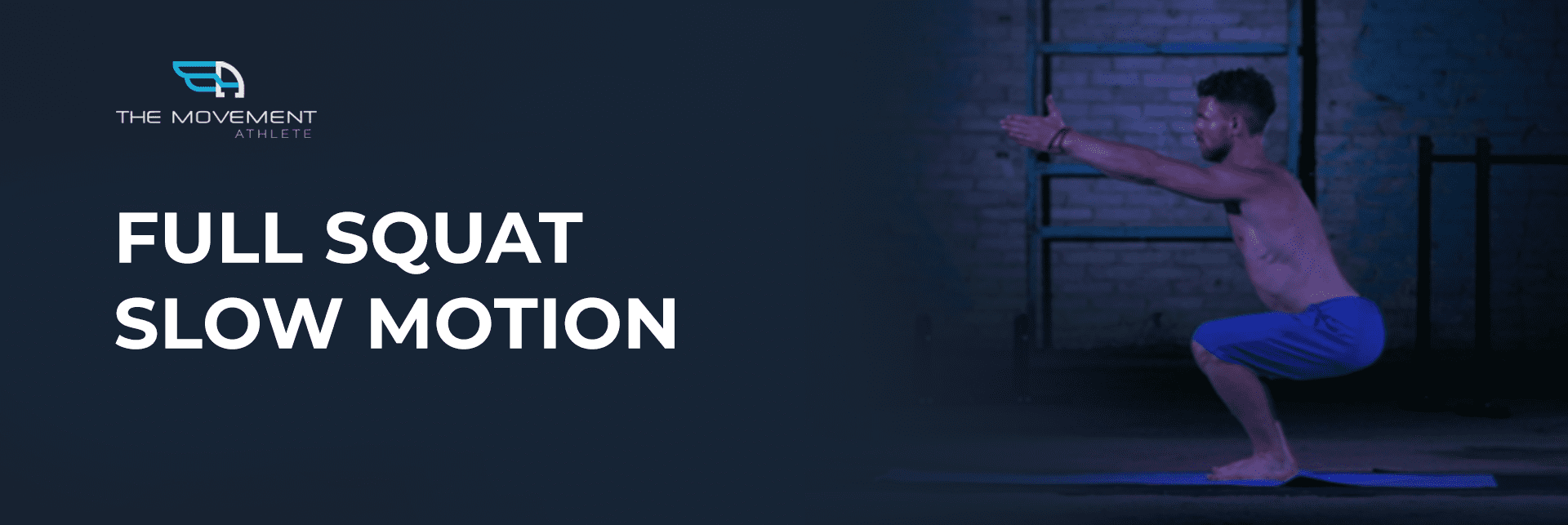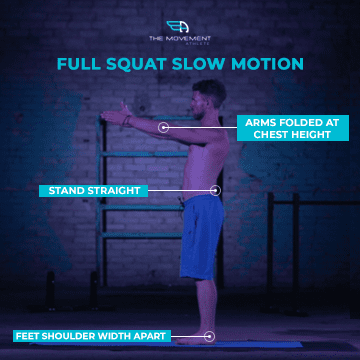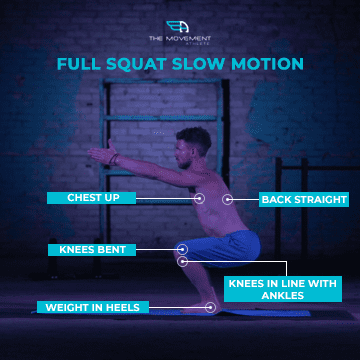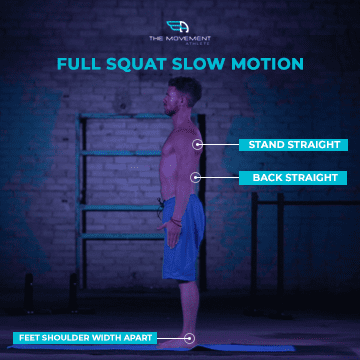
Join the tribe of Movement & Calisthenics Athletes –
People just like you that are working with their own body weight to get strength, lose fat build muscle, recover from injuries and live their best lives!
Do you feel that regular squats are too easy for you?
Try doing it again but this time, do it slower. Not that easy, right? It feels like a new exercise, but it’s still basically the same but is a lot harder and a lot better in terms of gains.
Slowing down the tempo of the exercise puts the muscles under tension and strained for longer periods of time. This allows for more muscle growth and more strength gains.
In addition, performing the exercise much slower makes you more focused on each muscle you are using. We’re talking about the mind-muscle connection. The more you’re conscious with your movement, which you will most likely be doing when your lifting at a very slow tempo, the more muscle fibres recruitment you will gain
Full squats slow motion is a squat fundamental exercise. Gluteus, quadriceps, and hamstrings are mainly strengthened during this lateral movement.
👍HOW TO KNOW WHEN IT’S SAFE TO ATTEMPT?
Full squat slow motion has a very straightforward prerequisite. It requires you to have a good number of repetitions of the regular full squats. If you can bust out 3 sets of 10 with good form, try moving to this exercise.
✅Summarized Benefits
- Further increase in leg strength
- Increase overall leg muscle size
- Improves lower body mobility
- Strengthens core stabilizers
- Helps in balance improvement
- Improves movement in day-to-day activities
How to Perform💪
- Begin standing with feet shoulder-width apart and arms folded on each other in front of your chest.
- With your weight in your heels, squat down keeping your knees tracking over your feet.
- Stand back up straight.
- Repeat for specified repetitions.
👉Keep in mind
Execution tempo
You can try out 10 seconds going down, 2-second pause at the bottom then 10 seconds again going up. If that’s still too hard for you, lower the time for both concentric and eccentric phase of the exercise. Play around with the tempo that gives you enough challenge without being too easy.
Keep proper form
When you’re starting to fatigue, it’s very difficult to stay in form but do your best to keep everything intact. The form you should have started within your first repetition should be similar to your last. If you’re too tired to do any proper reps, stop the exercise and rest for the next round.
You can go lower than your knees when performing the squat if your lower mobility permits it.
Coaching Pointers
Starting Position:
- Feet shoulder-width apart
- Stand straight
- Arms folded at chest height

Movement Position:
- Chest up
- Back straight
- Knees in line with ankles
- Knees bent
- Weight in heels

Finish Position:
- Stand straight
- Back straight
- Feet shoulder-width apart
